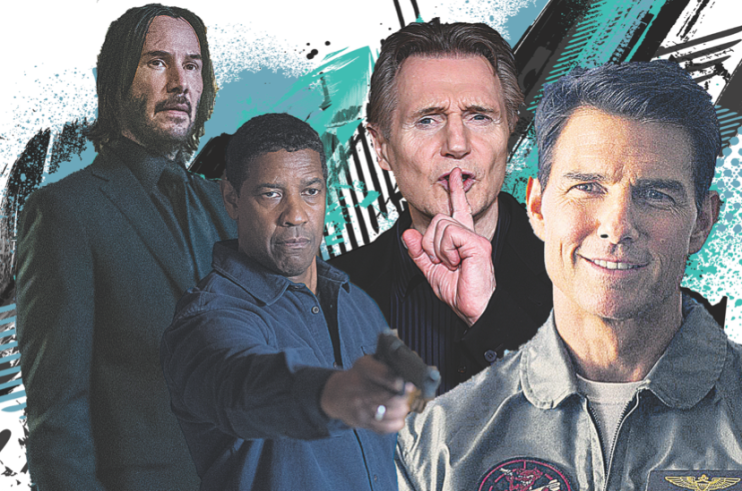As Denzel Washington leads The Equalizer 3 we ask: Why are all the action heroes so old?

Liam Neeson disarming two cops, cuffing them together and knocking them unconscious in Taken 3; Denzel Washington smashing a mobster over the head with a teapot in The Equalizer 2; Tom Cruise jumping off a cliff on a motorbike in MI7.
What do these men all have in common, apart from being the kind of people whose pint you wouldn’t want to spill? They were all in their 60s when these scenes were filmed.
From John Wayne to John Wick, the action movie industry is hooked on old guys, men (and they’re almost always men) holding back the sands of time, performing feats of strength, endurance and courage that would crush people half their age.
The trope was pushed to its absurd logical conclusion when Sylvester Stallone (68), Arnie (67), Harrison Ford (72) and Mel Gibson (58) lined up alongside an equally geriatric cast in The Expendables 3, an action movie with an average age of 57. Even the Bond franchise, the most successful of them all, has tended to opt for spies close to picking up their government pensions.
But why? In an industry obsessed with youth and beauty, what is it about grizzled blokes that quickens the pulse of action fans?
The obvious answer is that action films cost a lot to make and older, tried and tested actors make the most money. This holds up when you think about the buckets of box office dollars pulled in by the likes of Tom Cruise and Keanu Reeves. But as City A.M. film critic Victoria Luxford points out, it’s not always that simple.
“A bankable name is no guarantee. The Gunman starring Sean Penn was a flop, and Kevin Costner sure didn’t work out in 3 Days To Kill.”
In narrative terms, there are advantages to older characters, who are more likely to have lived the kind of lives that could plausibly be threatened by villains.
“Older heroes have a more believable past,” says Luxford. “Action movie characters are often quiet men pushed too far. They also tend to be people with a ‘Particular Set of Skills’ – it’s less believable if they are in their early 20s.”
With action movies often low on dialogue and high on… well, action, audiences have to quickly buy in to the logic of the film. A nearly-50 Keanu Reeves cradling his puppy and looking at pictures of his dead wife gives you an emotional connection to that character, as does a teary Liam Neeson sending his daughter off to university. There’s something at stake that you wouldn’t have were you to cast Harry Styles in the role.
This logic also applies off-screen, with older actors bringing the weight of their careers with them.
“Liam Neeson and Denzel Washington were better known for quality biopics and Oscar dramas before becoming action heroes,” says Luxford. “And Bob Odenkirk’s Nobody traded off the idea that the Better Call Saul actor doesn’t look like a killer. It’s intriguing, and gives the implication that anyone could be a hero.”
My best guess is that action movies are the purest expression of the male power fantasy, created (largely) by ageing men for audiences (largely) made up of ageing men: what could be more thrilling, more life affirming, than seeing a bloke refusing to go gently into that good night, instead using his fists and his wits to crash through a series of dangerous and sexy sequences? It certainly beats helping the kids with their homework before putting the bins out and getting an early night cos your back hurts.
But surely younger audiences must be ready for something more in their action heroes?
“I’d love to see more queer and female action heroes, but the audience has to turn up,” says Luxford. “Films like 2017’s Atomic Blonde, starring Charlize Theron as a bisexual assassin, didn’t do as well as something like John Wick, despite being an excellent movie.
“Audiences have to vote with their feet. Given John Wick 4 is among the biggest films of the year that might not be anytime soon.”
